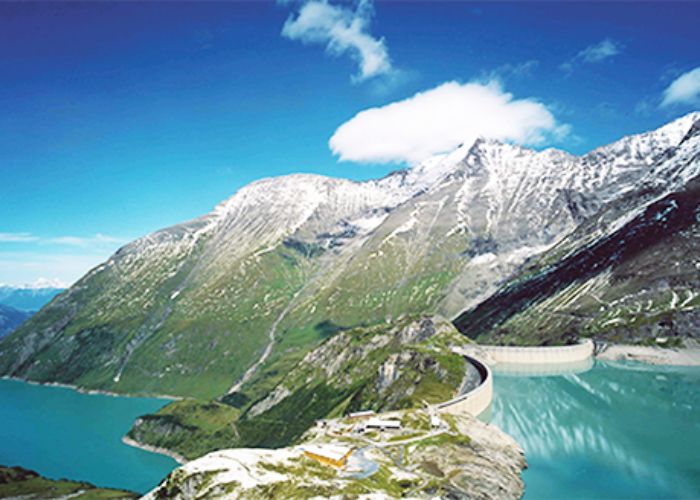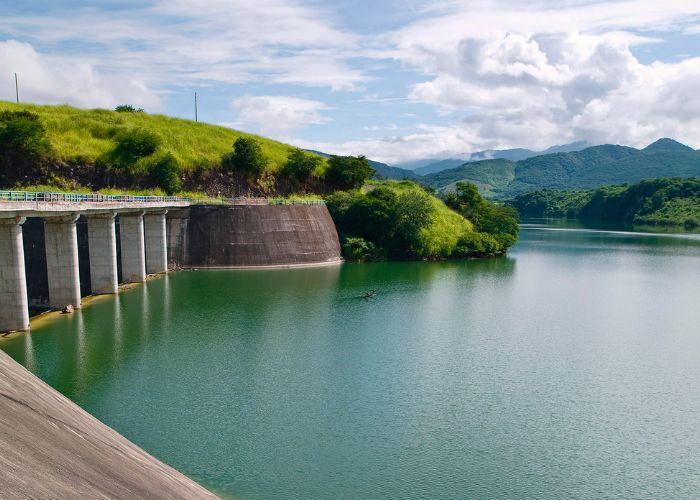Throughout my seven years of covering the power production sector as a writer specializing in energy, I’ve had the honor of touring hydroelectric facilities all around the world. Among the most dependable and long-standing renewable energy sources, hydroelectricity harnesses the kinetic energy of flowing water to produce clean, steady electricity. Let’s read below about “Top Hydroelectric Power Plants – Global Trends and New Ideas”.
Table of Contents
Top Hydroelectric Power Plants – Global Trends and New Ideas
Featured here are a handful of the world’s most remarkable hydroelectric facilities; we’ll also go over some of the latest developments in hydropower technology and some fresh suggestions for how to reduce our carbon footprint without sacrificing electricity generation.
The Top Performers
With an impressive 22,500 MW of installed capacity, the Three Gorges Dam in China stands as the largest hydroelectric plant in the world. After over 20 years of building, this Yangtze River gravity dam finally opened to the public in 2012; it powers a massive underground power station with turbine-generators. At nearly 600 feet in height and almost a mile in width, the scale is mind-boggling.
Both the massive size and the sophisticated automation and monitoring that make Three Gorges run so well left me in amazement on my 2016 tour. Recent enhancements have allowed Three Gorges to optimize productivity by integrating cloud computing and big data.
Another remarkable hydroelectric feat is the Itaipu Dam, which is located on the Paraguayan border with Brazil. Itaipu is the second biggest hydroelectric facility in the world, with a producing capacity of 14,000 MW; the two nations own a joint interest in the project. Itaipu provides 17% of Brazil’s power and 75% of Paraguay’s after 12 years of development, which ended in 1984.
The extraordinary engineering and planning that went into harnessing the Paraná River’s power was on full display during my 2019 visit to Itaipu. Its magnitude and intricacy are really astounding.
Nonetheless, the biggest hydroelectric power facility in the nation is still the Grand Coulee Dam in Washington State, USA. Continually producing carbon-free power since 1942, Grand Coulee has a capacity of 6,809 MW. Grand Coulee, a 550-foot-tall and almost mile-wide gravity dam, spans the powerful Columbia River. Massive generators, powered by water intakes located around 300 feet below the reservoir surface, are housed within the dam.
I have wonderful recollections of family vacations to Grand Coulee, an engineering marvel from the early 20th century, from my youth spent not far from the area. The construction of Grand Coulee, which lasted from 1933 to 1942, provided employment opportunities during the Great Depression and fueled industrial production throughout World War II. The symbolism of American productivity and inventiveness is undeniable.
Global Trends
To keep up with the ever-rising need for electricity, countries are increasing their hydropower output rather than relying on fossil fuels. The world’s efforts to lessen the effects of climate change and cut emissions of greenhouse gases are congruent with this.
Read More:- Bruce Nuclear Generating Station – Canada’s Top Nuclear Facility
By 2030, China aims to increase its hydro capacity from 352 GW, where it is now, to 560 GW. Among the many ongoing projects is the Baihetan Dam, which, when finished in 2022, will have the distinction of being the second largest hydro station in the world.
The Grand Ethiopian Renaissance Dam, currently under construction in Ethiopia, is set to become the biggest hydroelectric facility in Africa when it is finished in 2023. This Nile River gravity dam will increase Ethiopia’s development-supporting generating capacity by a factor of two, with 5,150 MW of power.
India plans to increase its hydropower capacity by 50 GW by the year 2030. This encompasses both new run-of-river facilities that are less impactful on the environment and pumped storage systems that recycle water.
There is tremendous hydroelectric potential in Nepal, the country that has the world’s highest mountains. Nepal is planning to construct mega-dams with the help of international investors so that it can supply electricity to its energy-hungry neighbors, China and India, even though the country is only 2% developed today.

New Ideas
More efficient and safer hydropower is becoming possible because to new technology:
Read More:- Siemens J-Class Gas Turbines – Irsching 4 Power Plant in Germany
- Optimal energy output across varying water flows can be achieved by use of advanced turbines. Manufacturers of cutting-edge turbine designs include Voith and GE.
- 3D spillway gate monitors and pressure sensors are examples of digital instruments that enhance control in real time. This improves the security of dams and keeps areas from flooding.
- Wind turbines designed with fish populations in mind reduce interference with fish migration and spawning. To keep fish away from wind turbines, bio-acoustic fish fences use a combination of sensing, control, and behavioral science.
- Controlled sediment flushing is made possible using automated sediment management systems, all while reservoir capacity is maintained. Reducing downstream consequences while maintaining water flows and power output is achieved through this.
- According to hydropower, Dams aren’t necessary for smaller run-of-river and micro-hydro facilities to harness water power. These typically supply off-grid power to rural areas at a reasonable price and have a less environmental impact.
- By transferring water from higher to lower reservoirs, pumped storage facilities can provide electricity during times of high demand. One method for storing energy on a grand scale is pumped hydro.
The Future of Hydroelectricity
A significant portion of the world’s renewable energy will still come from hydropower. Hydroelectric plants provide consistent baseload power with low carbon emissions, and water is plentiful.
Massive dams do a lot of damage to the environment, but there are ways to lessen that damage through sustainable design and operations. Reduced disturbance to habitats downstream is achieved through the use of fish-friendly turbines, controlled sediment flushing, and minimal flow requirements.
Sustainable power generation from hydropower can be achieved with the right technology and location. These zero-emission renewable power plants will be able to unleash more efficiency and productivity through innovations in design, materials, instrumentation, and control.
Conclusion
As a seasoned writer in the field, I am enthusiastic about the potential of new technologies such as variable-speed pumped storage, matrix-free fish diversion systems, and real-time hydrological monitoring. We can construct environmentally friendly dams that produce an abundance of clean electricity. I hope you like reading “Top Hydroelectric Power Plants – Global Trends and New Ideas”.

Mohsen Ali is a Chemical Engineer with over a decade of experience in the energy sector. Specializing in power plant efficiency and sustainability, he brings expert insights to borderpowerplants.org. Mohsen holds a Master’s degree in Chemical Engineering and is dedicated to advancing sustainable energy solutions. Connect with him on Instagram or LinkedIn for more insights.
